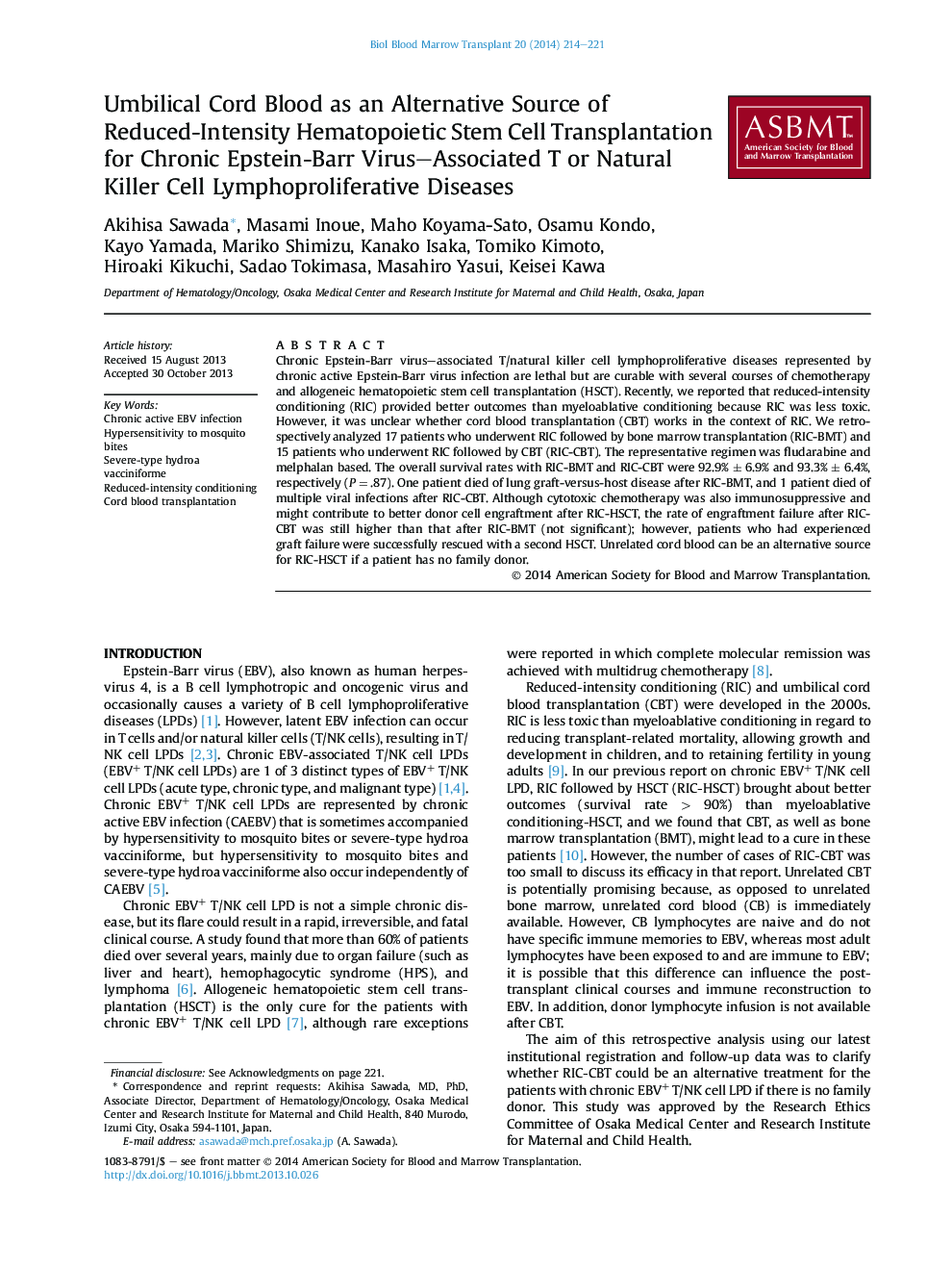| کد مقاله | کد نشریه | سال انتشار | مقاله انگلیسی | نسخه تمام متن |
|---|---|---|---|---|
| 2102212 | 1546283 | 2014 | 8 صفحه PDF | دانلود رایگان |
Chronic Epstein-Barr virus–associated T/natural killer cell lymphoproliferative diseases represented by chronic active Epstein-Barr virus infection are lethal but are curable with several courses of chemotherapy and allogeneic hematopoietic stem cell transplantation (HSCT). Recently, we reported that reduced-intensity conditioning (RIC) provided better outcomes than myeloablative conditioning because RIC was less toxic. However, it was unclear whether cord blood transplantation (CBT) works in the context of RIC. We retrospectively analyzed 17 patients who underwent RIC followed by bone marrow transplantation (RIC-BMT) and 15 patients who underwent RIC followed by CBT (RIC-CBT). The representative regimen was fludarabine and melphalan based. The overall survival rates with RIC-BMT and RIC-CBT were 92.9% ± 6.9% and 93.3% ± 6.4%, respectively (P = .87). One patient died of lung graft-versus-host disease after RIC-BMT, and 1 patient died of multiple viral infections after RIC-CBT. Although cytotoxic chemotherapy was also immunosuppressive and might contribute to better donor cell engraftment after RIC-HSCT, the rate of engraftment failure after RIC-CBT was still higher than that after RIC-BMT (not significant); however, patients who had experienced graft failure were successfully rescued with a second HSCT. Unrelated cord blood can be an alternative source for RIC-HSCT if a patient has no family donor.
Journal: - Volume 20, Issue 2, February 2014, Pages 214–221
